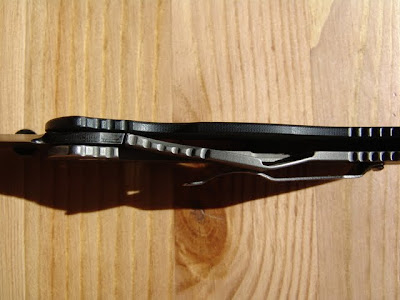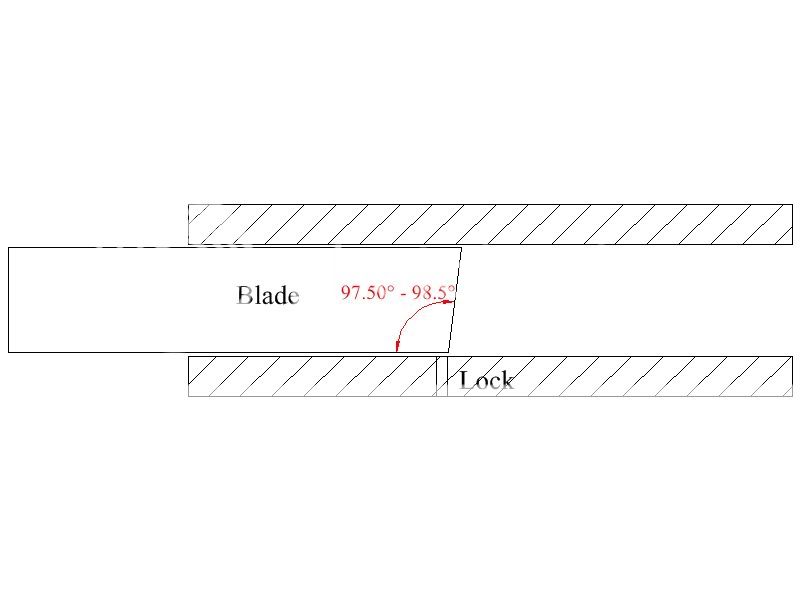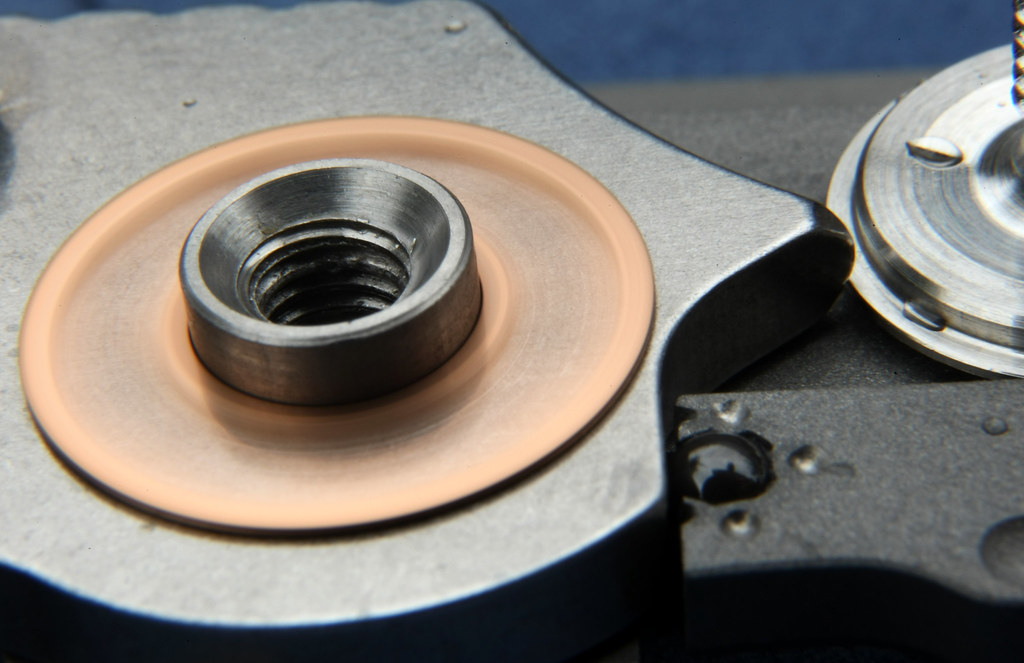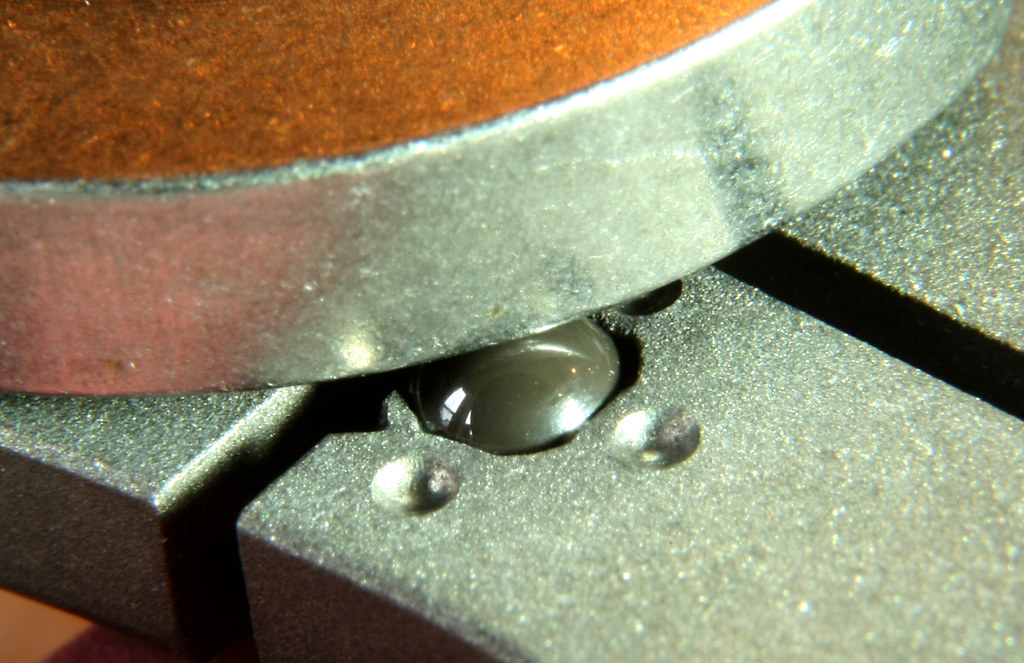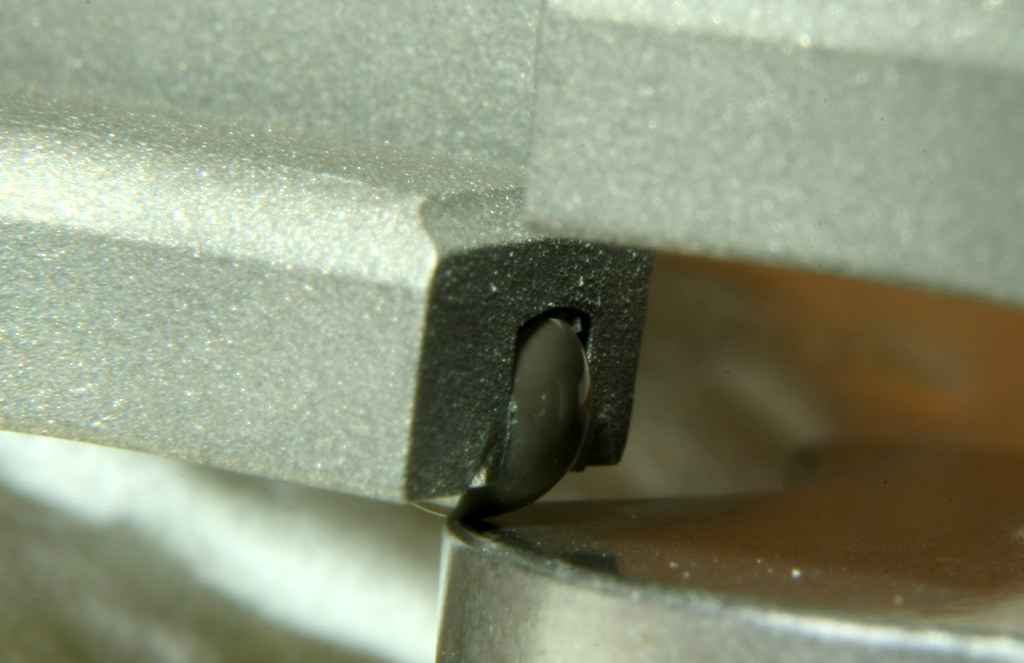Added from:
http://www.knife-expert.com/liners.txt
THE LINERLOCK -- RIGHT FROM THE SOURCE
Michael Walker's invention and development of the LinerlockTM
by Bernard Levine (c)1997 - for Knives Illustrated
The "Linerlock" knife is now so familiar that it is easy to
forget that both the knife and the name are relatively recent
inventions. Michael Walker made the first modern Linerlock in
1980, and he registered the name Linerlock as a trademark in
1989. Since the mid 1980s, dozens of hand knifemakers and factory
knife manufacturers have made locking liner type knives inspired
by Walker's designs, although very few of them fully understand
either the advantages or the limitations of this mechanism. The
best way to understand the Linerlock is to look back at how
Walker developed it.
THE EARLY DAYS
Mike Walker began to make knives early in 1980. One of his
first customers was a collector and dealer in Red River, New
Mexico, named Don Buchanan. Mike made ten fixed blade knives for
Buchanan. Don asked Mike for sheaths to go with these knives.
Mike made those leather scabbards reluctantly, then announced
that he hated making sheaths. So Don said, "Make folders."
Mike did. He made slip joints. He made lockbacks like the
factory folding hunters then on the market. He made mid-locks
with mechanisms copied from antique folders. But he was not
satisfied with any of these. Walker envisioned an improved folder
that would do away with what he saw as the many limitations of
conventional lockbacks.
First, he would design a knife that the user could open and
close safely and easily with one hand, without having to change
one's grip, or rotate the knife in one's hand.
Second, his new knife would do away with the sharp "back
square" of the conventional pocketknife blade. When a
conventional blade is closed, its back corner sticks out, and can
snag the user's clothing. In some folders the back square is
enclosed by extended bolsters, but this can compromise the shape
of the handle. Mike envisioned changing the basic geometry of the
folder, in order to eliminate the problem entirely.
Third, and most subtle, his knife would be self-adjusting
for wear. Other innovative folders of this period, notably the
Paul knife by Paul Poehlmann (patented 1976), were very strong
and very sleek, but they required careful adjustment of set
screws to keep their blades from working loose.
THE LOCKING LINER
Mike was familiar with the old locking liner design patented
by Watson & Chadwick in 1906 for Cattaraugus. Used first on
traditional folding hunters, this mechanism became standard on
electricians' pocketknives, and was also used on Cub Scout
knives. In this design, the liner projects above the handle, and
it is split lengthwise, alongside the pivot pin. The side of its
narrow tip engages the front edge of the tang when the locked
blade is open.
Mike noted that only a thin extension of the liner could be
used as the lock in the Watson & Chadwick design. This was
because most of the liner had to engage the pivot pin, in order
to hold the knife together against the tension of the backspring.
The result is that this type of lock is inherently weak.
Mike went back to first principles. He realized that if
spring tension and lock-up could be provided by a liner alone, he
would be able to dispense with the backspring entirely. With the
back spring gone, he could then have the end of the liner cut-out
engage the bottom end of the tang, making for a much stronger and
more positive lock. Indeed it would be nearly as strong as the
old Marble's Safety folder (patented in 1902), while dispensing
with that knife's long, awkward, and fragile fold-up extension
guard (the folded guard serves as that knife's lock when the
blade is opened).
STRONG AND SECURE
As it worked out, Mike had not anticipated just how strong
his new lock would be. About 1984 I helped to run side-by-side
destruction tests of all the types of locking folders available
at that time. Each test involved securing the handle of the knife
without blocking the movement of its blade or spring; then
sliding a one-foot pipe over the open blade (which was oriented
edge downward), to serve as a lever-arm; and finally hanging
weights from the free end of the pipe until the lock failed.
Name-brand conventional factory lockbacks failed at between
5 and 7 foot pounds (except for one that failed with just the
weight of the pipe). A Paul button-lock knife proved to be more
than twice as strong as the best of the conventional lockbacks.
But a Walker Linerlock was nearly four times as strong as the

